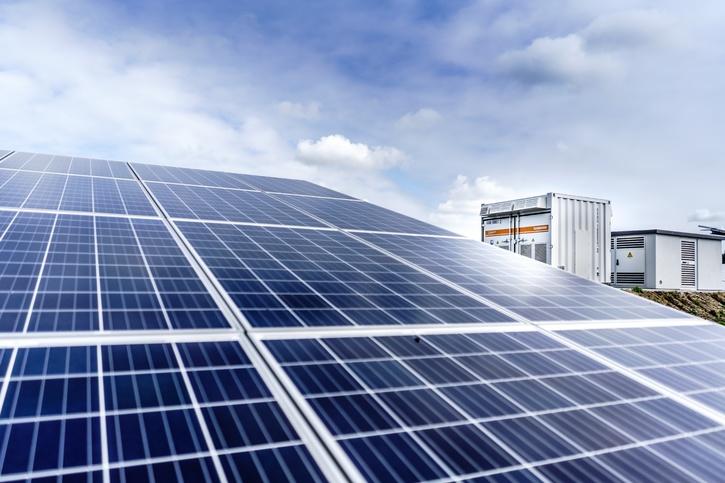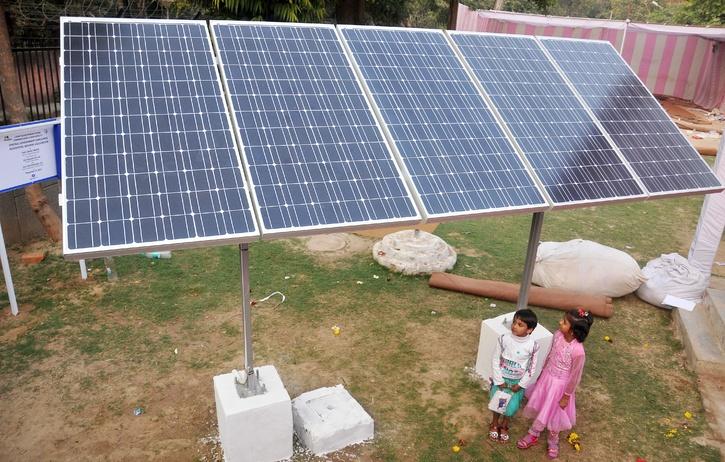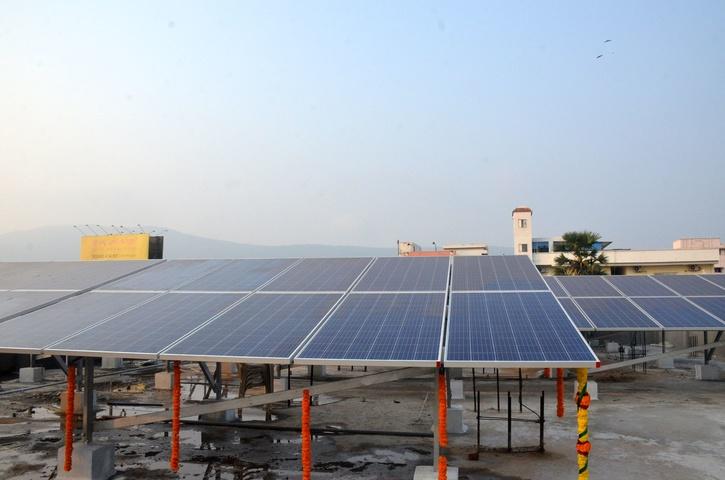
Highlights
- In 2016, Perinjanam panchayat authorities decided to tap into the potential of renewable energy with rooftop solar panels.
- In addition to producing clean energy and an income from it, the solar panels have also helped the panchayat to bring down carbon emissions by 1.92 lakh kilograms.
- Earlier this year, the Koovappady panchayat in Kerala’s Ernakulam District followed up on the Perinjanam model and installed an 8 kW rooftop solar system in its office.
Around the world, there is growing awareness about the need to switch to renewable energy sources.
The realisation that fossil fuels are running out and that the carbon emissions from them are doing irreversible damage to the planet is making more and more people and communities search for ‘cleaner’ energy sources.

And, by far solar has emerged as the best and most cost-effective source of renewable energy.
What makes solar energy the most attractive is that, unlike conventional power generation methods, it doesn’t need massive plants and can be generated on individual house rooftops.
Perinjanam model
That is exactly what Perinjanam Panchayat in Kerala’s Thrissur District has done successfully.

In 2016, Perinjanam panchayat authorities decided to tap into the potential of renewable energy with rooftop solar panels.
In the first phase, solar panels were installed on the rooftops of over 360 housed in Perinjanam and the electricity generated was uploaded to the main grid of the Kerala State Electricity Board (KSEB).
From rooftops to KSEB’s grid
In fact, Perinjanam was the first panchayat in India to install solar panels on household rooftops with the help of a cooperative bank, Solar Energy Corporation of India, and KSEB.

Initially, Perinjanam was generating 500-kW solar power which later increased to 900 kW.
Perinjanorjam is contributing 2,500 units of power to the KSEB grid a day.
After four years, the panchayat in total generates 1.16 MW and uploads it to the KSEB grid. Many families in the panchayat are getting paid by KSEB for the excess power generated after consumption.
In the second phase, another 9.5 kW capacity was added by installing rooftop solar panels on the Perinjanam Government UP School and the electricity generated was used to power street lights across the panchayat.
A total of Rs 9 lakhs including Rs 5 lakhs of CSR funds from a Kerala-based private firm was used to set up the additional solar panels.

Energy self-sufficient and source of income
According to the authorities, initially, loans were given by banks to encourage some of the poor families in Perinjanam to install solar panels on their rooftops, and in four years, most of them have been able to repay the amounts from the income they made from generating surplus electricity that is uploaded to the KSEB grid.
In addition to producing clean energy and an income from it, the solar panels have also helped the panchayat to bring down carbon emissions by 1.92 lakh kilograms.
In 2019 Perinjanam’s solar project won the Akshaya Oorja Awards, which recognises remarkable renewable energy initiatives in the state.
Perinjanam model, an inspiration
The success of Perinjanam has also become an inspiration for others and in the state budget speech earlier this year, Kerala Finance Minister KN Balagopal announced that this model should be extended to other panchayats too.
The minister informed that the government has allocated Rs 15 crore for the installation of solar panels at homes in the form of interest-free loans.

Earlier this year, the Koovappady panchayat in Kerala’s Ernakulam District followed up on the Perinjanam model and installed an 8 kW rooftop solar system in its office.
According to officials, the rooftop solar panels have helped to reduce its electric bills by nearly half.
Perinjanam model, beyond Kerala
Last month a delegation of elected representatives and officials from 37 panchayats in Tamil Nadu visited Perinjanam to study the model to replicate it in villages that face power issues.

According to a Kerala Government release, at least 25 panchayats in Tamil Nadu are set to replicate the Perinjanam Model this year itself.

